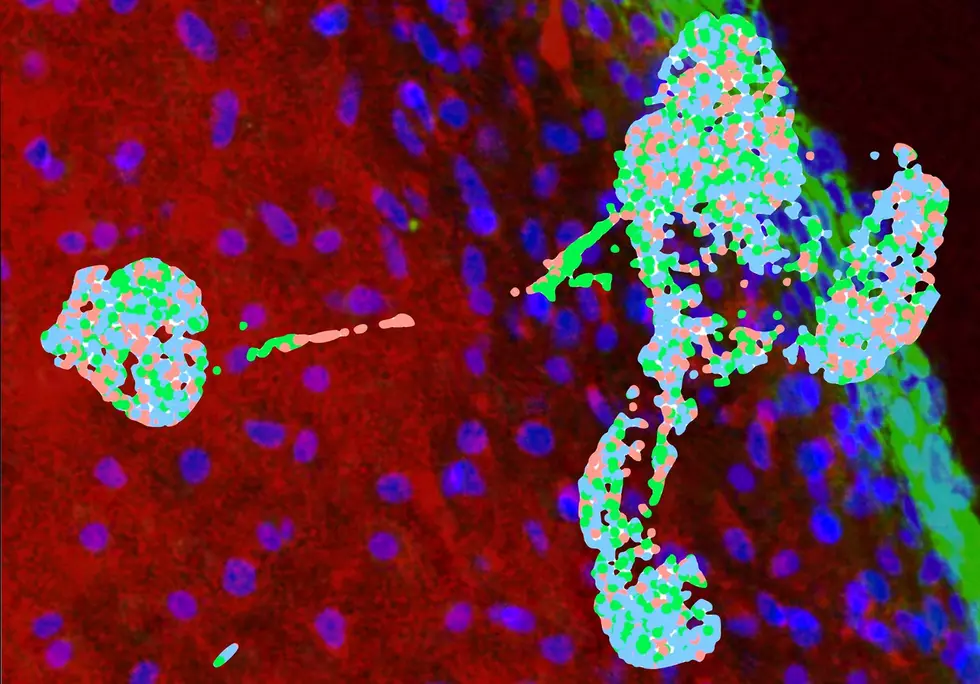
Amazing Cartilage-Generating Discovery at University of Montana
Among other benefits, this could give hope to over 230,000 children born annually in the U.S. alone with certain facial defects.
While the image they shared looks like a QR code gone horribly wrong, UM News Service tells that our very own University of Montana researchers and their partners have found a new method to generate human cartilage of the head and neck. UM biology professor Mark Grimes made the announcement, which has also been published in the journal iScience.
CRANIOFACIAL CARTILAGE BREAKTHROUGH
Professor Grimes says he and the team of researchers induced stem cells to become the cell type that normally makes up human craniofacial cartilage. Stem cells can replicate themselves and also develop into different types of cells. Grimes says, “The cells that normally give rise to this type of cartilage are called neural crest cells. We found a novel method for generating craniofacial organoids from neural crest cells.”
A CRITICAL UNMET NEED
UM is answering a loud cry for help. There has been a growing need for new methods to regenerate human cartilage for the 230,000 children born annually in the U.S. with craniofacial defects. Besides benefiting newborns, growing cartilage in the lab could also lead to effective treatments to repair craniofacial cartilage damage due to injuries.
Researchers point out that it is difficult to reconstruct natural features such as a person’s ears, nose or larynx with current plastic surgery techniques, and transplanted tissue is often rejected. The goal of UM's research is to develop a protocol for craniofacial cartilage generation for transplantation using human stem cells.
Science marches on, and it's cool to see the University of Montana's Division of Biological Sciences at the forefront of something so significant. More details can be found here.
LOOK: Do you see faces in these photos?
Gallery Credit: Stephen Lenz
LOOK: Do you see faces in these photos?
Gallery Credit: Stephen Lenz


